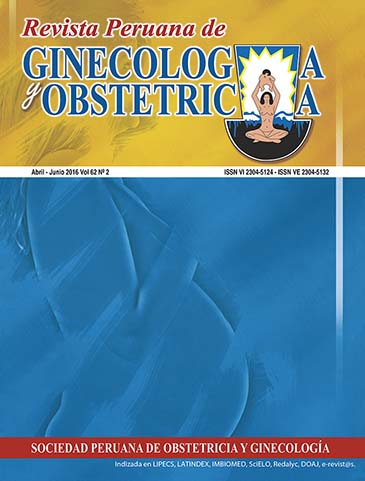Bareras para el aborto seguro en el marco de la ley peruana
DOI:
https://doi.org/10.31403/rpgo.v62i1898Resumen
Objetivo: Examinar el proceso histórico para institucionalizar el aborto terapéutico en el Perú y precisar su situación actual. Metodología: Revisión de la información bibliográfica existente en el país en relación al proceso seguido por muchas instituciones hasta conseguir que el Ministerio de Salud apruebe la Guía Nacional para el Aborto Terapéutico. Luego el investigador principal convocó a 10 jefes de servicio/departamento de Ginecología y Obstetricia de igual número de hospitales que tienen regulada la prestación de servicios de aborto terapéutico mediante Guías o Protocolos locales desde 5 años antes, a quienes se les solicitó información. Resultados: La oficialización de la Guía Nacional para la prestación de servicios de aborto terapéutico por parte del Ministerio de Salud ha sido un trabajo persistente de muchas instituciones de la sociedad civil, pero los 10 hospitales convocados ya venían respondiendo a la demanda desde 5 años atrás. En los 5 años se atendió 257 abortos terapéuticos. La frecuencia del aborto terapéutico es aún baja, sin embargo se aprecia un aumento progresivo conforme avanzan los años. Es predominante la frecuencia de abortos terapéuticos en el segundo trimestre del embarazo, siendo la causa más frecuente las anomalías congénitas incompatibles con la vida. El uso del misoprostol en la evacuación del útero ha alcanzado el 95% de los casos y no se ha verificado más de 2% de complicaciones leves. Conclusión: El aborto legal por causales de salud se viene ofertando en forma restringida en el Perú.Descargas
Los datos de descargas todavía no están disponibles.
Descargas
Publicado
2016-07-12
Cómo citar
Távara Orozco, L., Macharé, P., García Angulo, S., Guevara, E., Cabrera, S., Aguilar, J., Ramírez, Y., Orderique, L., Silva, C., Sánchez, S., Leveau, W., & Burela, J. (2016). Bareras para el aborto seguro en el marco de la ley peruana. Revista Peruana De Ginecología Y Obstetricia, 62(2), 153–168. https://doi.org/10.31403/rpgo.v62i1898
Número
Sección
Artículos Originales
















